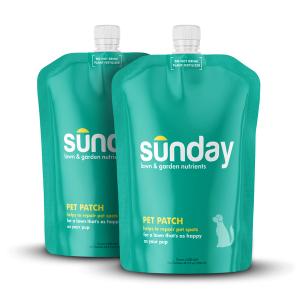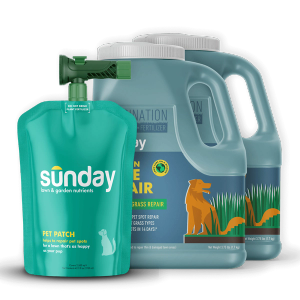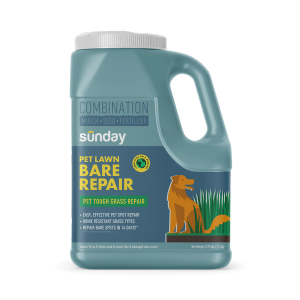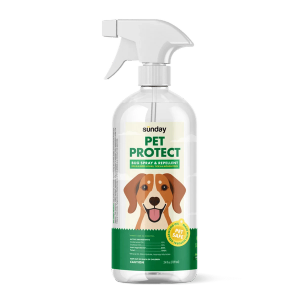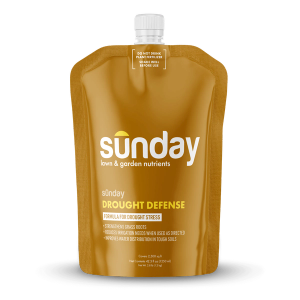Many homeowners stop lawn care in the fall. However, this season is the most important time to prepare your lawn for the year ahead. As temperatures cool, your grass shifts its energy. It focuses less on growing green blades and more on developing deep roots to store nutrients for winter.
A well-timed fall lawn fertilizer application supports this natural process. It builds a strong foundation for winter survival and a quick return in the spring. Key benefits include:
- Strengthens grass from the roots up
- Improves resilience against cold, drought, and disease
- Stores energy for a greener, healthier lawn next spring
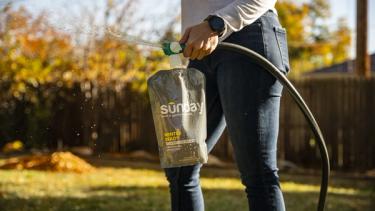
Choosing the right fall lawn fertilizer
To support your lawn's shift to root growth, the best fall fertilizer should focus on two key nutrients: nitrogen and iron. These are often supplemented with beneficial ingredients like seaweed or other micronutrients. These ingredients work together to nourish the plant below the surface without forcing unnecessary top growth before winter.
- Nitrogen (N) is the most critical nutrient for fall care. It fuels root development and helps the grass store carbohydrates, which act as energy reserves during dormancy.
- Iron (Fe) helps the lawn maintain its green color as temperatures drop and supports overall plant health.
- Seaweed contains natural compounds that enhance root growth and improve the lawn's resilience against winter stress.
What to avoid in fall lawn fertilizers
It is just as important to know what to avoid. Many traditional "winterizer" fertilizers contain high levels of phosphorus (P) and potassium (K). However, applying too much of these can be counterproductive in the fall.
Excess potassium late in the season can encourage winter diseases like snow mold. Furthermore, most established lawns already have sufficient phosphorus in the soil. Adding more is often unnecessary, especially since falling leaves release phosphorus back into the soil as they decompose.
Look for a fall lawn fertilizer with a high-nitrogen, zero-phosphorus, and zero-potassium formula, reflected in an N-P-K ratio like 22−0−0.
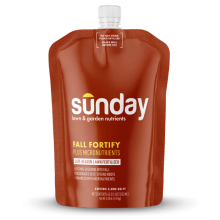
Fall Fortify Plus Micronutrients Lawn Fertilizer
Our 22−0−0 NPK fall lawn fertilizer is designed to support your lawn's unique needs in autumn. It extends green color and strengthens grass without pesticides.
When to apply fall lawn fertilizer
Timing is key to maximizing the benefits of your fall fertilizer. You should apply it while the grass is still green and can absorb nutrients, but after the rapid growth of summer has slowed. For most US regions, this window is between August and October.
- Warm-season grasses (like Bermuda, Zoysia, St. Augustine): Apply from mid-August to late September.
- Cool-season grasses (like Fescue, Kentucky Bluegrass, Ryegrass): Apply from late August to mid-October.
Sunday Tip:
If you're in Florida or other year-round warm climates, you can apply fall fertilizer until November!
Already have a Sunday custom plan?
Your Sunday custom lawn plan offers the best application times tailored to your lawn's specific location. You can visit the My Plan section in your account to find your customized schedule.
Fall lawn care for a healthier spring
Fertilizing is crucial, but these other fall lawn care tasks will set your lawn up for success.
- Patch and overseed: Cooler air and warm soil provide the perfect conditions to repair bare spots and overseed. This leads to a thicker, more resilient lawn in the spring.
- Adjust watering and mowing: Reduce watering frequency as grass growth slows. For the last few mows of the season, raise your mower blade. Taller grass helps insulate the plant's crown from the cold.
- Manage weeds: Fall is a highly effective time for weed control. Many weeds are transporting energy to their roots, making them more vulnerable to spot treatments.
- Rake leaves: Rake or mulch fallen leaves regularly. A thick, wet layer of leaves can smother your grass and promote disease.
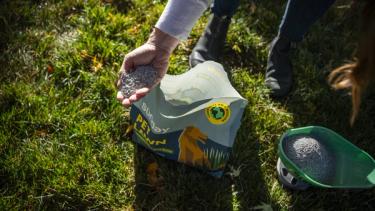
Get your custom plan
Sunday uses a personalized quiz alongside soil, climate, and satellite data to provide a custom lawn plan and application schedule tailored specifically to your lawn, with unlimited expert support.
Key takeaways
- Fall is the most important time to fertilize to build strong roots for winter survival and an easier spring green-up.
- Choose a high-nitrogen fertilizer without phosphorus (P) or potassium (K), such as a 22-0-0 formula.
- Time your application correctly by feeding cool-season lawns from late August to mid-October and warm-season lawns from mid-August to late September.
- Complete your fall lawn prep by overseeding, managing leaves, and adjusting mowing height before winter.
Cited sources
Fertilizing Cool Season Lawns. Kansas State University Extension
Rethinking Fall Fertilization. University of Nebraska-Lincoln Extension







